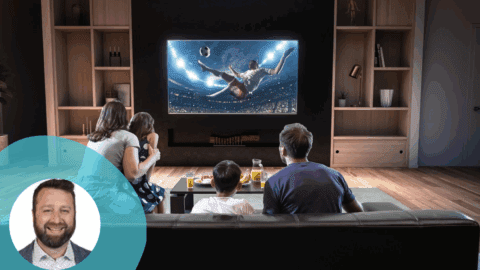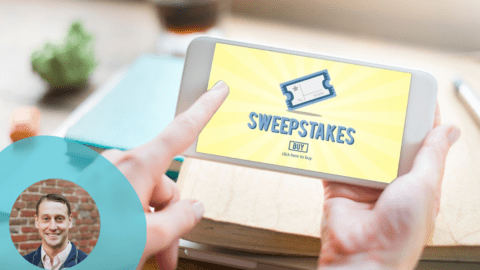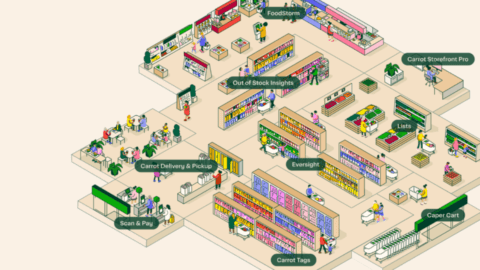The growing popularity of social media and smartphones has generated more connected and empowered consumers. To keep pace with these trends, cutting-edge organizations are revising their loyalty programs and are incorporating more interactive elements that drive engagement and long-term sales.
Gamification, for example, offers a scalable way to revitalize loyalty programs for forward-thinking retailers, according to a recent webinar hosted by Badgeville.
The webinar, titled: Power Proactive Loyalty: Transform Traditional Rewards into Long-term Advocacy with Gamification, outlined top pain points organizations face while revising their loyalty programs. In addition, the session highlighted best-in-class strategies by sharing the success of Restaurant.com, an online restaurant directory and deal provider.
Consumer attitudes toward loyalty programs are declining, according to Emily Collins, Customer Loyalty Analyst at Forrester Research. Fewer than half of consumers feel that loyalty programs save them money, according to a recent survey conducted by Forrester Research.
In addition, traditional loyalty programs are losing their foothold on buyer influence. Only 26% of consumers agree that programs influence what they buy and 22% agree that programs influence how much they spend.
“Marketers can only deliver so many discounts and offers without cutting into margin or driving increased desire from their consumers,” Collins said. “As these consumer expectations increase and consumers demand more control over the brand, loyalty programs have to increase additional perceived value with new techniques to keep those customers engaged.”
Driving Engagement With Gamification
Restaurant.com faced a variety of challenges while transforming the company loyalty program, according to Collins.
For example, discounts and savings are the cornerstone of popular loyalty programs. However, since the Restaurant.com business model focuses on selling restaurant coupons, this was an inefficient strategy and incentive to include. While researching potential loyalty program solutions, the company discovered gamification.
“Ultimately, we didn’t seek out gamification,” said Brent Carter, VP of Customer Retention at Restaurant.com. “Gamification found us. We have an unconventional business model, so we needed an unconventional loyalty program.”
Working with Badgeville, Restaurant.com created a gamified loyalty program based around points, levels, badges and quest chains. Consumers are rewarded based on a variety of desired behaviors, including: social engagement, shopping, purchasing, and creating and consuming content.
“We knew that if we drive customers to engage with us while making a dining decision, we’re more likely to increase lifetime value,” Carter said. “But in order to do that, we needed to be able to reward consumers based on their behaviors. Gamification allows real-time interaction, and the ability to send the right rewards at the right time to consumers.”
Since rolling out the program in January 2013, Restaurant.com has seen the following results:
- 1.8 million activities performed;
- 12 million points earned; and
- Four million rewards earned.
Ongoing connection and communication with consumers also has allowed Restaurant.com to collect and analyze valuable data on overall engagement and participation in the loyalty program.
To further increase customer engagement and loyalty, Restaurant.com plans to make the site more social, and embed gamification into all facets of the browsing and buying journey, according to Carter. In addition, the company will be implementing multi-session tracking so consumers will instantly be recognized when they visit the web site multiple times.
Crafting A Successful Gamification Campaign
When done correctly, gamification can help brands and consumers engage in a more meaningful way. In addition, gamification enables organizations to track and understand consumer behaviors as they participate in challenges, acquire rewards and collect points. These metrics can help identify loyal consumers.
An effective gamification program will use smart mechanics to remove the roadblocks that can stifle the customer journey, said Chris Lynch, Director of Marketing at Badgeville.
The mechanics used to gamify platforms and marketing campaigns are threefold, according to Lynch:
- Game Mechanics: Recognize behaviors with points, achievements, rewards and missions;
- Reputation Mechanics: Leverage rankings and status based on awareness of the brand, and allow users to track progress with leaderboards; and
- Social Mechanics: Surface key people and their behaviors with activity notifications.
“In most cases, gamification isn’t replacing something,” Lynch said. “Gamification is supposed to help you get more with what you already have.”












